Mt. Kailash & Manasarovar Yatra Overland
Mt. Kailash & Manasarovar Yatra - 14 days Overland by YatraWorld
Specialist in Mt. Kailash Manasarovar, Kasi, Rameshwaram & other holy places across India
18 years of experience in handling all age groups
Served 1100+ yatris with zero casualty
We provide greatest care to our yatris by keeping small group size
Traditional South Indian Food
Tamil, Telugu & English speaking team lead
We arrange pre-yatra sessions and prepare yatris for the toughest, yet the rewarding spiritual journey
Sessions will be conducted by Dr Kavi Muralikrishnan, who experienced Mt. Kailash for 18 times.
Optional 3 days Pokhara & Mukthinath yatra
First to conduct Mt. Kailash Heli trip from South India
- includes
- excludes
Things to do in and around mtkailashmanasarovar
How to reach mtkailashmanasarovar?
We've established convenient pickup and drop options right in your vicinity. Simply download the app, book your package using your location, and inform us of your exact whereabouts. Additionally, we've outlined various routes to reach the destination, taking into account commonly used traffic patterns.
Additional Information about Mt. Kailash & Manasarovar Yatra Overland
Mt. Kailash & Manasarovar Yatra Overland For enquiries
If you are looking to know more information about Mt. Kailash & Manasarovar Yatra Overland, our team at mtkailashmanasarovar will assist you personally through the below dedicated number
Mt. Kailash & Manasarovar Yatra Overland address
Mt. Kailash & Manasarovar Yatra Overland,
mtkailashmanasarovar,
tibet
Whatsplan's Mt. Kailash & Manasarovar Yatra Overland contact number : +91 9842067265
Places covered in(11)
Gauri Kund - Tibettibet, tibet
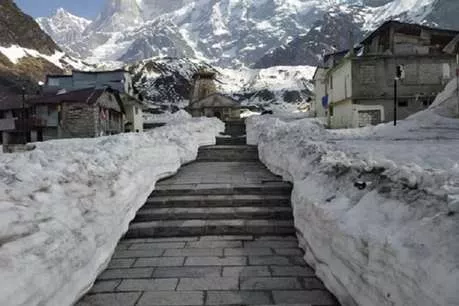
Gauri Kund is situated in the southwestern part of the Tibet Autonomous Region, in close proximity to Mount Kailash. It is part of the Transhimalaya range in the Tibetan Plateau. Gauri Kund is considered a sacred lake in Hinduism and is associated with Goddess Parvati, the consort of Lord Shiva. According to Hindu mythology, Goddess Parvati performed penance at this spot to win the affections of Lord Shiva, and it is believed that taking a dip in the holy waters of Gauri Kund purifies the soul. Gauri Kund is a significant stop on the pilgrimage route around Mount Kailash. Pilgrims on the Kailash Manasarovar Yatra often visit Gauri Kund during their journey. The pilgrimage includes circumambulating Mount Kailash and paying respects to various sacred sites along the way. The lake is surrounded by breathtaking Himalayan landscapes, adding to its natural beauty. The serene and tranquil environment creates a spiritual atmosphere that resonates with the religious sentiments of pilgrims. Pilgrims may perform rituals, prayers, and ceremonial activities at Gauri Kund as part of their spiritual journey. The cultural practices and rituals vary, with participants often immersing themselves in the religious ambiance of the site. Several legends and stories are associated with Gauri Kund, reflecting the rich tapestry of Hindu mythology. These stories often involve divine beings and their interactions with the natural landscape, imbuing the site with cultural and religious significance. The journey to Gauri Kund is usually undertaken as part of the larger pilgrimage to Mount Kailash and may involve trekking or other means of transportation. Pilgrims often consider the challenging journey as part of their devotion and commitment to their faith. While Gauri Kund is particularly significant in Hinduism, the region around Mount Kailash is revered by followers of multiple religions, including Buddhism, Jainism, and the Bön faith. The sacred sites in the area reflect the shared reverence for the natural landscape and its spiritual significance.
Guhyeshwari Templekathmandu, nepal
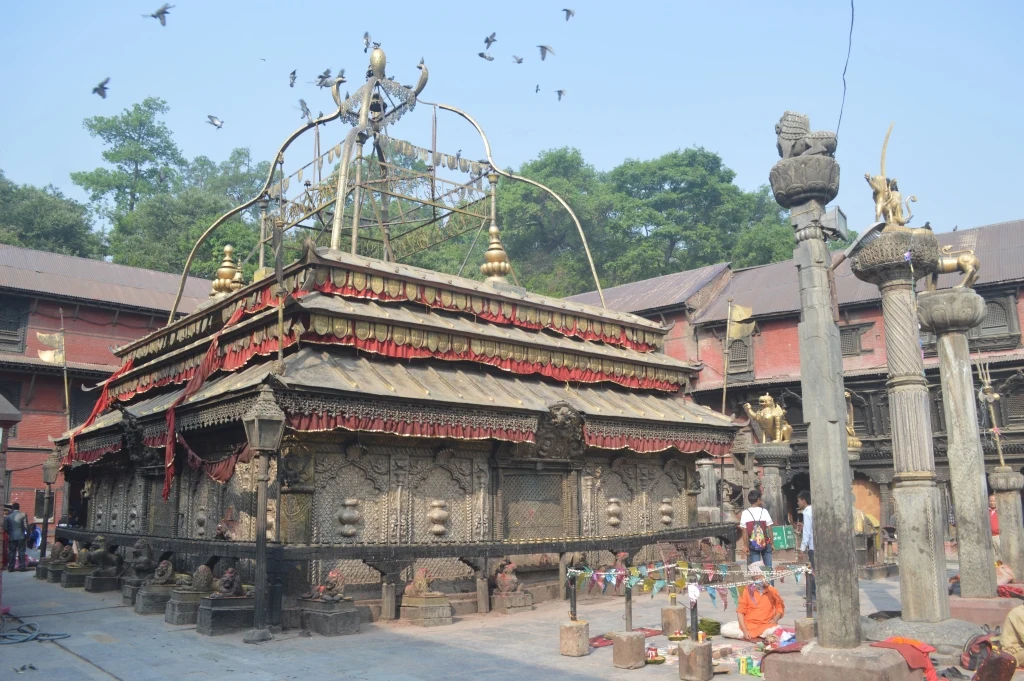
Guhyeshwari Temple (Nepali), also spelled Guheswari or Guhjeshwari, is one of the revered holy temples in Kathmandu, Nepal. This temple is dedicated to Guhyeshwari or Adi Shakti. The temple is also a Shakti Peetha and is about 1 km east of Pashupatinath Temple and is located on the southern bank of the Bagmati River. It is said that this temple is the Shakti chair of Pashupatinath Temple. It is an important pilgrimage destination for Hindus, especially for Tantric worshipers. King Pratap Malla built this temple in the 17th century. The goddess is also called Guhyekali. The temple's name originates from the Sanskrit words Guhya (secret, hidden, or cave) and Ishwari (goddess). Literally, the name "Guhyeshwari" stands for the goddess of the cave and the origin of the name aligns with the Hindu legend of Sati, her self-immolation when She turns into Adishakti, the Goddess of cosmic energy, at Daksha yagna. In Lalitha Sahasranama the 707th name of the Goddess is mentioned as Guhyarupini (The uncanny form of Goddess intimates that She is beyond human perception, and the invisible location where She resides allows Her to render justice impartially. Another belief is that it is the secret 16th syllable of the Shodashi Mantra) (LS 137th verse: Sarasvati shastramayi| Guhaamba guhyaruupini||). The mythology of Daksha yaga and Sati's self immolation had immense significance in shaping ancient Sanskrit literature and even had impact on the culture of India. It led to the development of the concept of Shakti Peethas, thereby strengthening Shaktism. When Shiva was insulted by his father in law (i.e., Daksha), his wife Sati Devi was so angry that she jumped into the flames of the yagya (a ritual involving offerings to a sacred fire). Shiva was grief-stricken and picked up her corpse and began to wander about, as her body parts fell to the earth. There are 51 Shakti Peethas which are believed to be enshrined with the presence of Shakti due to the falling of body parts of the corpse of Sati Devi, when Lord Shiva carried it and wandered throughout Aryavartha in sorrow. The 51 Shakti Peethas also correspond to 51 letters of the Sanskrit alphabet. One view is that Guhyeshwari Temple marks the spot where Sati's hips or hind part is said to have fallen. The term guhya is often mistaken as referring to vagina. The genitals of Sati Devi is said to have fallen at another Shakti Peeth worshiped by the name "Kamarupa-Kamakhya" in Assam. Another version is that Guhyeshwari Temple marks the place where both the knees of the goddess is said to have fallen. Each Shakti Peeth is dedicated to a Shakti and a Kalabhairava. In Guhyeshwari Temple, the Shakti is Mahashira and the Bhairava is Kapali. The goddess is worshiped at the centre of the temple in a kalasha (water jar) that is covered with a layer of silver and gold. The kalasha rests on a stone base which covers an underground natural water spring, from which water oozes out from the edges of the base. The temple stands at the centre of a courtyard and is topped with four gilded snakes that support the finial roof. This temple is revered by Tantric practitioners, and Tantric rites are performed in this temple. The temple is also mentioned in the Kali tantra, Chandi tantra, and Shiva tantra Rahasya and is regarded as one of the most important places for gaining the power of tantra. The Vishwasorup of goddess Guhyeshwari shows her as a many and different coloured headed goddess with innumerable hands. The temple gets much crowded during Dashain and Navaratri. Newari Vajrayana Buddhists consider Guhyeshwari to be sacred to Vajrayogini in the form of Vajravarahi and to be the location of root of the mythical lotus upon which Swayambhunath stupa rests, which is also the umbilical cord that nurtures Kathmandu. In Tibetan language, the place is called Pakmo Ngülchu (Varahi's womb fluid). The water which flows from the spring in the well of the temple is believed to be vaginal discharge, likely amniotic fluid, or waters of Vajravarahi.
Sagasaga, tibet
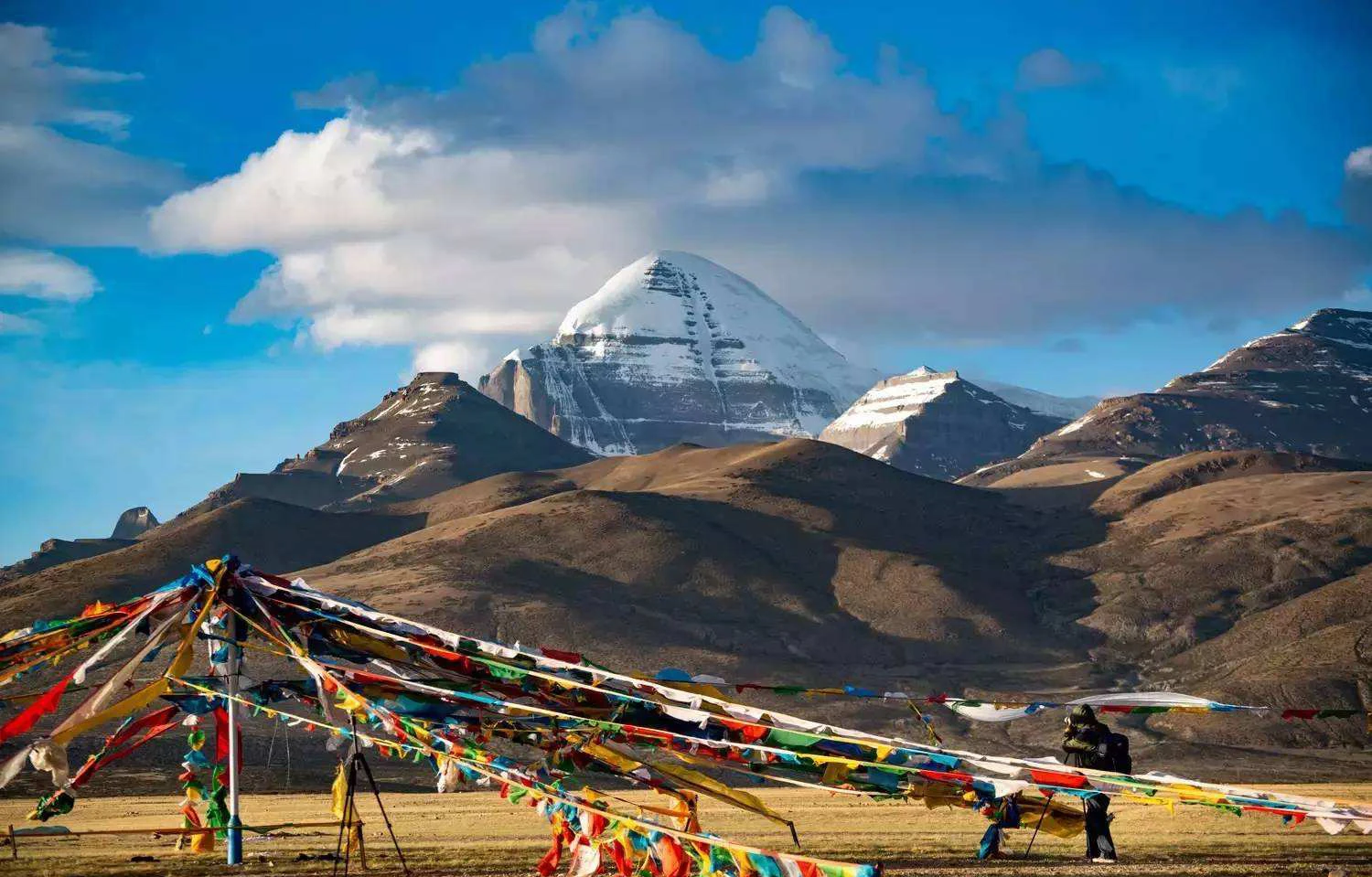
Saga County is a county of the prefecture-level city of Xigazê in the Tibet Autonomous Region, China, bordering Nepal to the west and southwest. Dajia Lake and Jiesa Lake lies in the country.Tibet’s ‘Happy Land’ that is also favoured as the stop for varied trucks sprawling all across the town, Saga is a beautiful city. It is the last town situated on the Yarlung Tsangpo River’s banks and is also serving as a resting spot for varied tourists who are on their way to Mt. Kailash. There is nothing much in the town to visit and thus, it is treated more as an overnight stop rather than a tourists’ historical destination.Saga is endowed with beautiful natural scenery and landscapes. Covered by Mount Kailash in the northwest and Himalaya Mountain Range in the south, there are around tens of small lakes in this area and six hot springs. The most famous hot spring is the bowl shaped Rujao with healing attributes.
Darchendarchen, tibet
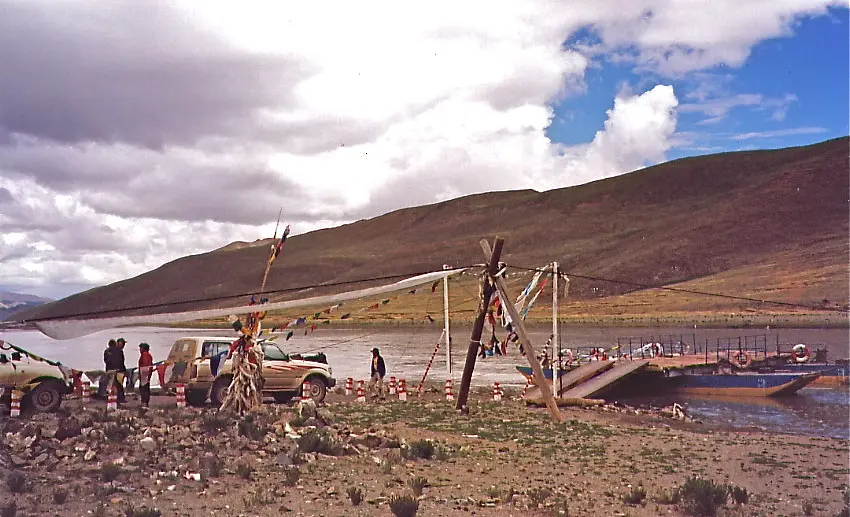
Darchen is a small village located in the Tibet Autonomous Region of China. It serves as the traditional starting and ending point for the sacred Kailash Mansarovar Yatra, one of the most important pilgrimage routes in Hinduism, Buddhism, Jainism, and Bon. Darchen is situated near the sacred Mount Kailash, which is considered a holy site in several religions. The village is at an altitude of approximately 4,575 meters (15,010 feet) above sea level. Pilgrims embarking on the Kailash Mansarovar Yatra typically start their journey from Darchen. The pilgrimage involves circumambulating Mount Kailash, and Darchen is the gateway to this sacred trek. The Kailash Kora, a circumambulation around Mount Kailash, is an essential part of the pilgrimage. Pilgrims walk around the base of the mountain, and the entire trek usually takes several days to complete. Darchen is home to the Darchen Monastery, which holds religious significance for the local community and pilgrims. The monastery is a place of worship and provides accommodation for pilgrims. Darchen is located at a high altitude, and travelers need to be aware of the potential risks associated with altitude sickness. Adequate acclimatization is recommended before undertaking the pilgrimage. Darchen is accessible by road, and travelers often reach there after a journey from the town of Purang or other nearby areas. Mount Kailash is considered sacred in Hinduism, Buddhism, Jainism, and Bon. The Kailash Mansarovar Yatra is a significant spiritual journey for adherents of these religions.
Zuthulpukzuthulpuk, tibet
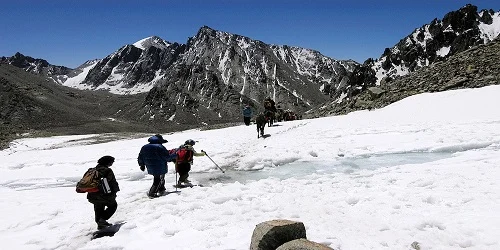
Zuthulpuk is located in the southwestern part of the Tibet Autonomous Region, near Mount Kailash. It is one of the three major stops along the sacred circumambulation (kora) of Mount Kailash. Zuthulpuk is a crucial destination for pilgrims undertaking the Kailash Manasarovar Yatra, a sacred pilgrimage in Hinduism, Buddhism, Jainism, and the Bön faith. Pilgrims perform the kora, a ritualistic circumambulation around Mount Kailash, which includes reaching Zuthulpuk. Zuthulpuk is known for its religious and spiritual significance. It is believed to be associated with the legendary Milarepa, a revered Tibetan Buddhist saint and poet. The site features caves and rock formations linked to Milarepa's mystical experiences. One of the prominent features at Zuthulpuk is Milarepa's Cave, where Milarepa is said to have meditated during his spiritual journey. Pilgrims often visit the cave, and it is considered a sacred space for meditation and reflection. Zuthulpuk marks the culmination of the challenging Kailash Parikrama, the trek around Mount Kailash. Pilgrims undertake this arduous journey, covering a distance of approximately 52 kilometers (32 miles), with Zuthulpuk being the final destination before completing the circuit.Gauri Kund, a sacred water body, is located near Zuthulpuk. Pilgrims believe that taking a dip in the waters of Gauri Kund purifies the soul and is an essential part of the religious rituals associated with the Kailash Yatra. Pilgrims engage in religious rituals, prayers, and circumambulation around the sacred sites at Zuthulpuk as part of their spiritual journey. The trek itself is considered a test of devotion and endurance. Another cave at Zuthulpuk is known as the Cave of Miracles. Pilgrims believe that the cave holds special significance, and the name reflects the mystical and spiritual aura associated with the site. Zuthulpuk offers stunning views of the Himalayan landscape and the surrounding mountains. The natural beauty of the region adds to the spiritual experience for those undertaking the pilgrimage. While Zuthulpuk has deep roots in Tibetan Buddhism, it is also a site revered by people of various religious traditions. The mountainous terrain and sacred sites around Mount Kailash draw pilgrims from Hindu, Buddhist, Jain, and Bön communities.
Syabrubesikathmandu, nepal

Syabrubesi is a picturesque village located in the Rasuwa District of the Bagmati Zone in Nepal. Nestled in the Langtang National Park area, this village is surrounded by stunning natural beauty, making it a popular starting point for treks to the Langtang Valley and the Langtang Lirung Base Camp. Syabrubesi is situated along the banks of the Trishuli River, surrounded by lush green hills and snow-capped mountains. The village is characterized by its alpine setting, with terraced fields, dense forests, and traditional Nepalese houses. It serves as the gateway for trekking adventures in the Langtang region. Trekkers often start their journey to Langtang Valley and other nearby trekking destinations from Syabrubesi. Popular trekking routes include the Langtang Valley Trek, which offers breathtaking views of the Himalayas and diverse landscapes. The village is inhabited by people of the Tamang ethnic group, and visitors can experience the unique Tamang culture and traditions. Local festivals, rituals, and customs add a cultural charm to the village. Syabrubesi, like many other areas in Nepal, was affected by the devastating earthquake in April 2015. The earthquake caused damage to buildings and infrastructure in the village. Reconstruction efforts have been underway to restore and rebuild the affected areas. Syabrubesi is also a stopover for travelers heading towards the border with Tibet. The village serves as a point of entry for those crossing into Tibet for religious, cultural, or touristic purposes. The surrounding natural scenery, with views of snow-capped peaks, flowing rivers, and dense forests, adds to the overall appeal of Syabrubesi. While the village is relatively small, it offers basic amenities such as lodges, teahouses, and restaurants to cater to the needs of trekkers and visitors. Syabrubesi, with its combination of natural beauty, cultural richness, and trekking opportunities, attracts adventurers and nature enthusiasts seeking an authentic Himalayan experience.
Kyirongkyirong, tibet
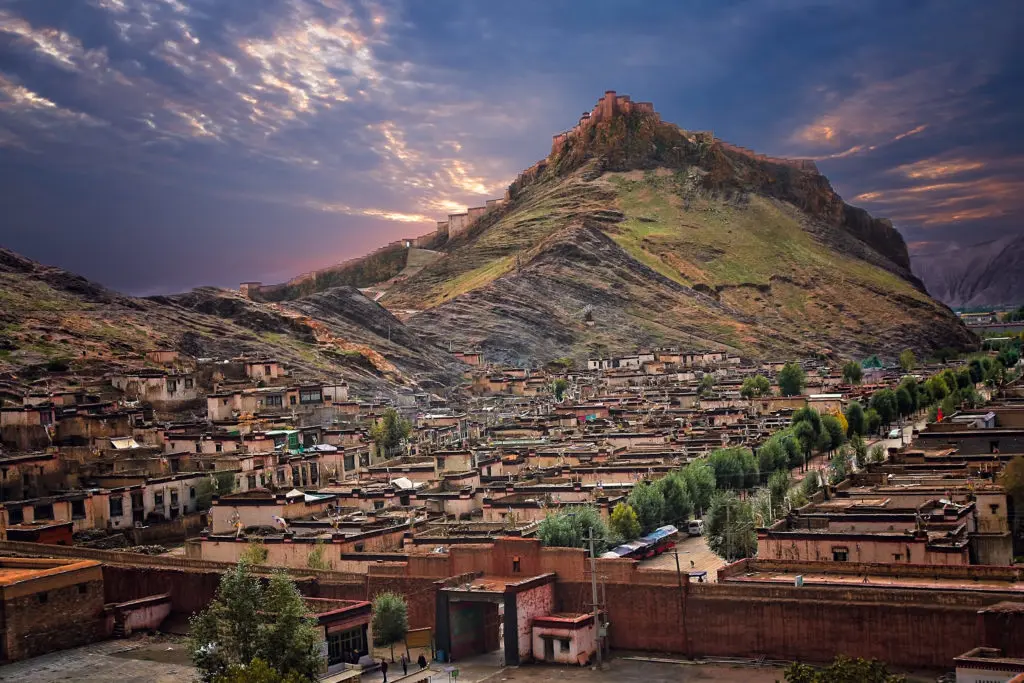
Kyirong, also spelled Kyirong or Kerung, is a town in the Tibet Autonomous Region of China. It is situated in the southern part of Tibet, near the Nepal-Tibet border. Kyirong is located in the Kyirong County, Shigatse Prefecture, in the southern part of Tibet. It is situated in a valley surrounded by mountains. Kyirong is in close proximity to the Nepal-Tibet border. The town has gained importance as a border crossing point between Tibet and Nepal. The landscape around Kyirong is characterized by rugged mountains, deep valleys, and the presence of rivers. The region is part of the Himalayas and offers stunning views of snow-capped peaks. The Kyirong-Rasuwa border crossing between Tibet and Nepal is significant for travelers moving between the two countries. It serves as an entry point for those traveling from Nepal to Tibet or vice versa. Kyirong has become a notable destination for travelers exploring Tibet, especially those entering or exiting Tibet through Nepal. The scenic beauty of the area, coupled with its cultural and natural attractions, makes it a stop for those journeying through this region. Some pilgrims and travelers heading to Mount Kailash and Lake Manasarovar in western Tibet pass through Kyirong, as it offers an alternative route to reach these sacred sites. While Kyirong itself may not be as well-known for specific cultural or historical sites, the surrounding region is rich in Tibetan culture, and travelers often experience the local customs and traditions.
Mount Kailashmountkailash, tibet
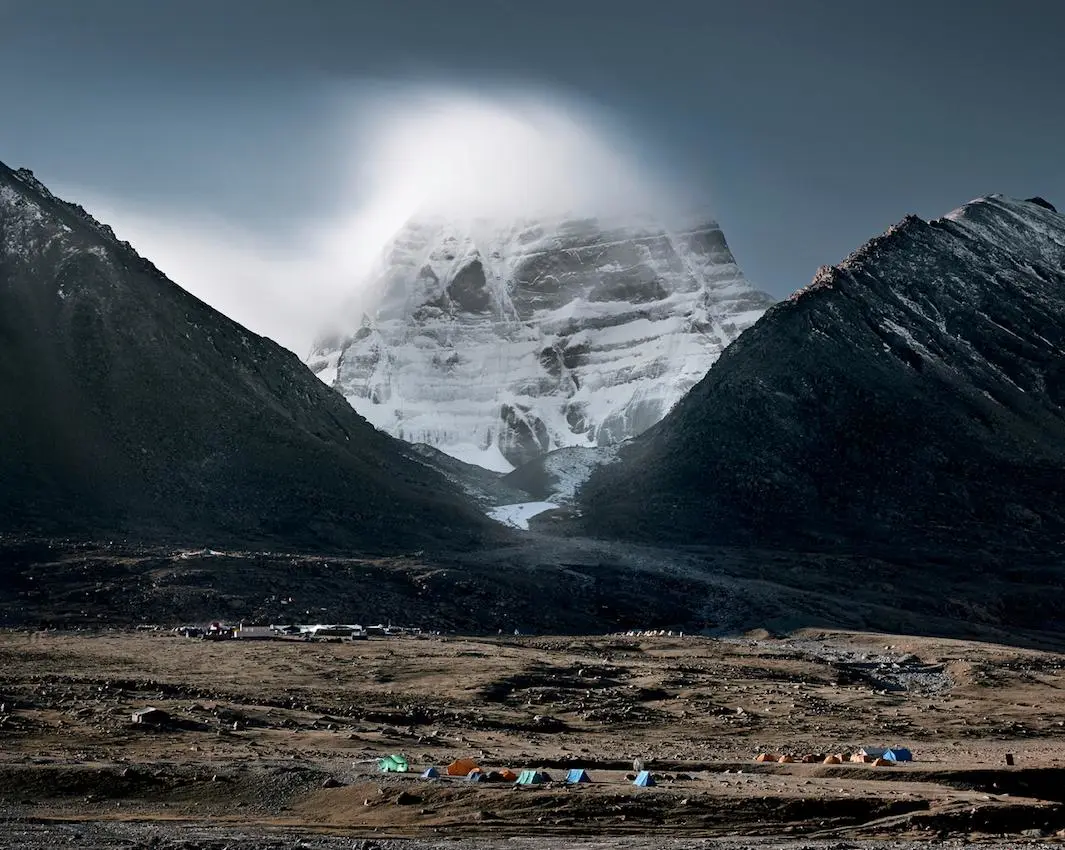
Mount Kailash is part of the Transhimalaya range and is situated in the southwestern Tibetan Plateau. It is near the source of some of the longest rivers in Asia, including the Indus River, the Sutlej River, the Brahmaputra River, and the Karnali River. Mount Kailash is considered one of the most sacred mountains in the world. It holds religious significance for several major religions, and pilgrimage circuits around the mountain are an integral part of the spiritual practices in these traditions. In Hinduism, Mount Kailash is believed to be the abode of Lord Shiva, one of the principal deities in the Hindu pantheon. It is also considered the spiritual center of the world and is associated with various myths and legends. In Buddhism, Mount Kailash is known as Kang Rinpoche, and it is regarded as a sacred place associated with the Buddha Demchok (also known as Chakrasamvara). Pilgrims perform circumambulation (kora) around the mountain, a practice believed to bring spiritual merit. In Jainism, Mount Kailash is associated with Rishabhadeva, the first Tirthankara. It is considered one of the Ashtapada mountains, and the significance of the mountain is mentioned in Jain scriptures.The Bön religion, the indigenous spiritual tradition of Tibet, also recognizes Mount Kailash as a sacred site. It is believed to be the residence of the Bönpo deity Demchok. Pilgrims from various religions undertake the challenging trek around Mount Kailash as part of their spiritual journey. The kora, or circumambulation, is typically performed in a clockwise direction, and completing one circuit is considered highly meritorious. Located near Mount Kailash, Lake Manasarovar is another sacred site. Pilgrims often combine the circumambulation of Mount Kailash with a visit to Lake Manasarovar. Apart from its religious significance, Mount Kailash is renowned for its stunning natural beauty. The peak, standing at about 6,638 meters (21,778 feet), is a distinctive pyramid-shaped mountain that has captivated travelers and pilgrims for centuries. The spiritual and cultural impact of Mount Kailash extends beyond its physical presence. It has inspired countless works of art, literature, and cultural expressions across the diverse regions and traditions that hold it sacred. In recent years, there has been a growing emphasis on environmental conservation around Mount Kailash to preserve its unique ecosystem and maintain its cultural and spiritual significance.
Budhanikantha Templekathmandu, nepal
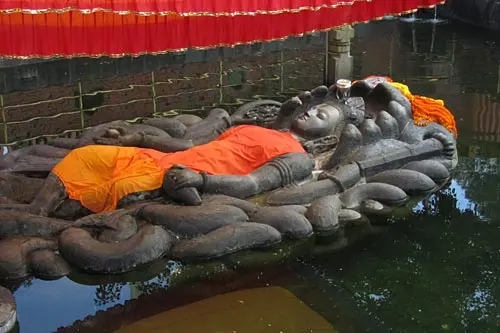
Budhanilkantha Temple, located in Budhanilkantha, Nepal, is a Hindu open air temple dedicated to Lord Vishnu. Budhanilkantha Temple is situated below the Shivapuri Hill at the northern end of the Kathmandu valley. and can be identified by a large reclining statue of Lord Vishnu. The temple's main statue of Budhanilkantha is considered the largest stone carving in Nepal. Budhanilkantha temple, also known as the Narayanthan Temple, is situated in Kathmandu. Though the temple is named Budhanilkantha, its name does not come from the Buddha; Budhanilkantha stands instead for “Old Blue Throat”. The statue symbolizes Lord Vishnu, who is regarded as one of the 'Trimurtis', along with Brahma and Shiva. According to one story, a farmer and his wife once struck a figure while plowing the field, which caused it to start soaking blood into the ground. This turned out to be the figure of the lost deity of Budhanilkantha, which was recovered and placed in its present position. The Budhanilkantha Temple has become the site where Haribondhini Ekadashi Mela takes place on the 11th day of the Hindu month of Kartika (October–November). Attended by thousands of pilgrims, it is the temple's principal festival in celebration of the awakening of Lord Vishnu from his long sleep. A legend states that King Pratap Malla (1641–1674) had a prophetic vision. This vision resulted in him believing that the kings of Nepal would die if they visited the Budhanilkantha Temple. Nepali monarchs after King Pratap Malla have never visited the Temple in fear of the prophecy.
Lake manasarovartibet, tibet
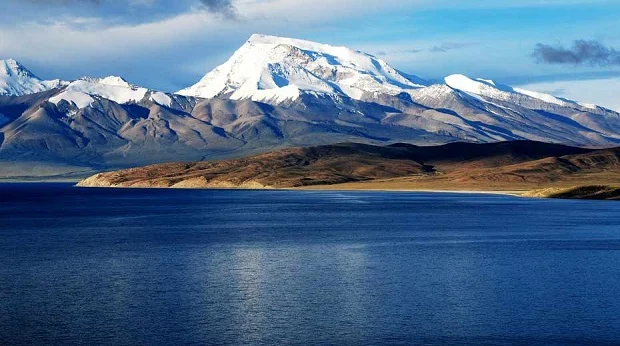
Lake Manasarovar, often spelled Mansarovar, is a freshwater lake located in the Tibet Autonomous Region of China, near Mount Kailash. It is one of the highest freshwater lakes in the world, situated at an altitude of about 4,590 meters (15,060 feet) above sea level. The lake is renowned for its stunning natural beauty and spiritual significance in Hinduism, Buddhism, Jainism, and Bon. Lake Manasarovar is considered one of the holiest lakes in the world in Hindu and Buddhist traditions. It is associated with various mythological and religious narratives, and its waters are believed to have purifying properties. In Hinduism, Lake Manasarovar is considered the source of the four major rivers of the Indian subcontinent—Indus, Brahmaputra, Ganges, and Sutlej. It is also believed to be a manifestation of the legendary Lake Pushkara. Lake Manasarovar is an important pilgrimage site for Buddhists, particularly those following Tibetan Buddhism. It is often circumambulated along with Mount Kailash, and the journey around the lake is considered spiritually significant. Many pilgrims from India, Nepal, Tibet, and other countries undertake the Kailash Mansarovar Yatra, a sacred pilgrimage that involves circumambulating Mount Kailash and taking a dip in the holy waters of Lake Manasarovar. Surrounded by snow-capped mountains and with clear blue waters, Lake Manasarovar is known for its breathtaking beauty. The serene landscape and reflections of the surrounding peaks contribute to its allure. Lake Manasarovar is relatively large, with a circumference of about 88 kilometers (55 miles). Its maximum depth is around 90 meters (295 feet). The lake and its surroundings provide a habitat for various bird species, and the region is known for its unique flora and fauna adapted to high-altitude conditions. Travelers often reach Lake Manasarovar as part of the Kailash Mansarovar Yatra. The journey to this remote region requires permits, and visitors should be prepared for the high-altitude conditions.
Dirupakdirupak, tibet
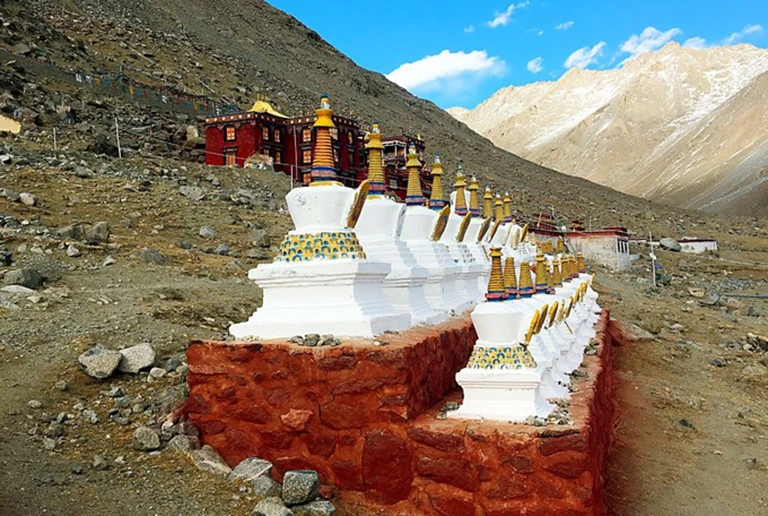
Dirapuk is one of the key stops along the traditional pilgrimage route around Mount Kailash. Dirapuk is situated on the northern face of Mount Kailash in the Tibet Autonomous Region of China. Pilgrims on the Kailash Mansarovar Yatra often trek from Darchen (the starting point) to Dirapuk, and then continue on the circumambulation (parikrama) of Mount Kailash. Dirapuk is home to the Dirapuk Monastery, which holds religious importance for pilgrims. The monastery provides shelter to the pilgrims during their journey. The trek from Dirapuk is part of the challenging but spiritually significant journey around Mount Kailash. Many pilgrims believe that circumambulating Mount Kailash brings spiritual merit and helps in achieving enlightenment. Dirapuk is situated at a high altitude, and travelers, especially those not acclimatized to such elevations, need to be cautious and take necessary precautions to prevent altitude sickness.